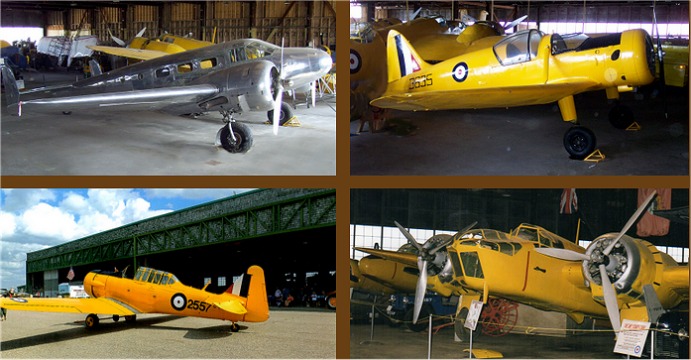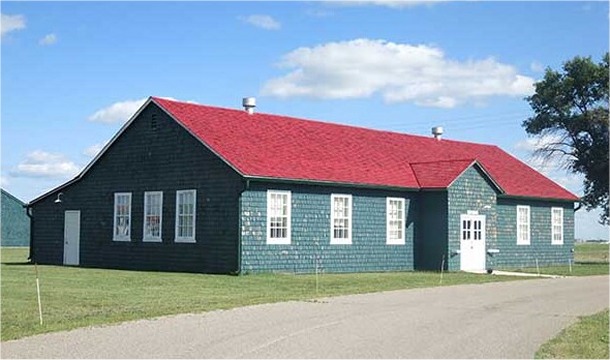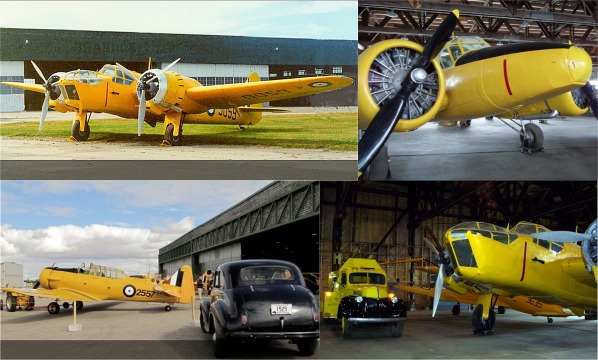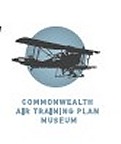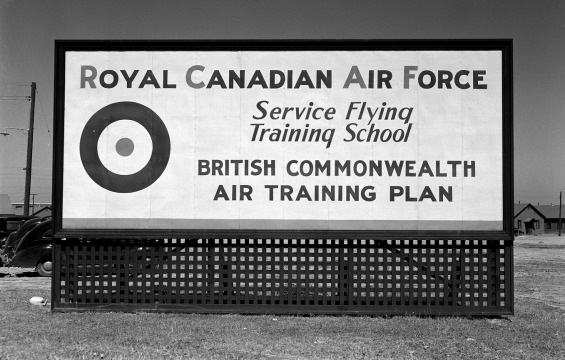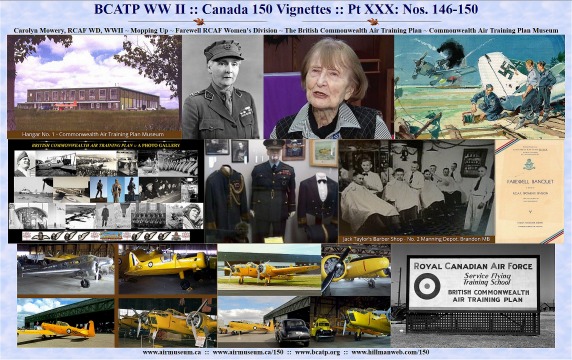146
of 150: Carolyn Mowery, RCAF WD, WWII
The following email was received at the Commonwealth
Air Training Plan Museum in November 2017. The subject of the email is
Carolyn Mowery, a veteran of the Royal Canadian Air Force Women’s Division
in World War II.
From: Betlock, Erin (MDVA)
To: airmuseum@inetlink.ca
Subject: RCAF WWII female veteran in Minnesota
Hi Stephen (Hayter, Executive Director CATPM),
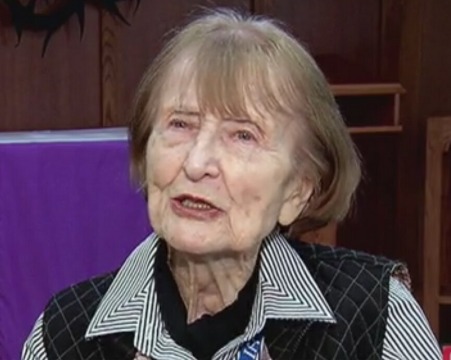 I
get the emails from the Manitoba board of tourism and notice the link to
your museum in it. I am the volunteer coordinator for the Minnesota
Veterans Home in Minneapolis, Minnesota. We have a volunteer who
comes and volunteers every Wednesday morning here, she’s been doing so
for over a decade. She is also a WWII veteran who served in the RCAF
as part of the Plan. She is 97 years old. I just spoke to her
this morning and asked if she was familiar with your museum, she is originally
from Winnipeg but hasn’t lived there in many year, and she had not but
was interested.
I
get the emails from the Manitoba board of tourism and notice the link to
your museum in it. I am the volunteer coordinator for the Minnesota
Veterans Home in Minneapolis, Minnesota. We have a volunteer who
comes and volunteers every Wednesday morning here, she’s been doing so
for over a decade. She is also a WWII veteran who served in the RCAF
as part of the Plan. She is 97 years old. I just spoke to her
this morning and asked if she was familiar with your museum, she is originally
from Winnipeg but hasn’t lived there in many year, and she had not but
was interested.
I assume you might be interested in her and her story.
I have pasted a short newsclip from last spring that was aired on the local
ABC affiliate here with her in it and then also a short write up that I
put together to put in one of the volunteer newsletters, so you’ll have
a little back ground on her. I know she is planning on going to Winnipeg
to visit in April or May, although I know Brandon is quite a bit farther
north.
http://kstp.com/news/minnesota-moment-kstp-minnesota-veterans-home-volunteer/4446607/
Carolyn Mowery turned 96 last August, but that hasn't
slowed her down in the slightest. She still volunteers every Wednesday
in the chaplaincy program at the Minnesota Veterans Home in Minneapolis
and has residents she meets and visits with on a regular basis. She also
hosts an annual "Goodbye Winter, Hello Spring" party for all 341 Residents
there. This year's party was held Wednesday. Mowery served in the Royal
Canadian Air Force during World War II, becoming the 158th woman from Manitoba
to join. She traveled to London for six months in 1945. As Canadian prisoners
of war were released from POW camps, she helped process them from hospitals
in London to go to medical facilities back home in Ottawa. Her husband
served as well, and she said she won't stop giving back until she's reunited
with him.
Canada entered World War II in September of 1939.
By late 1941 England had suffered great aircrew losses in their Royal Air
Force, thus England came to Canada to recruit replacements. Subsequently,
the Royal Canadian Air Force was faced with needing replacements of their
own and turned to recruiting women. The RCAF came to the University
of Manitoba, where I was a student and I joined the RCAFWD or the Royal
Canadian Air Force Women’s Division. The WD was later dropped. I
was the 158th girl that joined the Royal Canadian Air Force from the province.
I began my active service in January 1941 and was discharged
in November 1945. I first served as an Airwoman 2nd Class and was
stationed at an Elementary Flying Training School where the students were
pilot-trainees. Among other duties, I served on Medical Emergency Teams.
My chief duty was hand-holding, bandaging, and cleaning up crash sites.
As this was a training school the pilots were novices and in addition to
skirmishes there were also crashes every day. I graduated to visiting in
hospital the pilots who were injured. I had no previous experience.
During my years of active service I was stationed at about 15 different
posts all around Canada.
As the years progressed, with constant education, training,
and promotions in the field, my assignment had a very special interest-
planning for our Prisoners of War returning from Europe (mostly from Germany).
I travelled to London for a 6 month period in 1945. As Canadian soldiers
were released from POW camps, I helped process them from hospitals in London
to go to medical facilities in Ottawa, Canada for whatever follow up was
needed.
Most of the young ladies in the RCAF were just out of
school and most of the pilots were older and more mature, I remember fondly
how they looked after the young female recruits as if they were there younger
sisters and wanted to make sure they were protected and didn’t get into
any trouble.
I was discharged in November 1945. After my discharge,
I returned to the University of Manitoba but remained in the Active Reserve
Units during my studies. I graduated with a degree in biochemistry
and eventually studied Psychology. For my graduate work, I moved
to the University of Chicago, where I met my husband, John, a licensed
clinical psychologist. He had served in the USAF, Pacific Theater,
as a pilot throughout WWII.
After I graduated, John and I were married, lived and
worked for several years in Indianapolis, Toronto, and finally Minneapolis.
After many happy years together, John suffered a fatal heart attack on
April 12, 2005. And then the Minnesota Veterans Home- Minneapolis
came into the picture! Chaplain Neil Hering invited me to join the
Chaplaincy Unit as a volunteer and I did in July 2005.
Again, thought she would be of interest to you, let me
know if you have questions!
Erin Betlock
Volunteer Services Coordinator
Minnesota Veterans Home- Minneapolis
5101 Minnehaha Avenue S.
Minneapolis, MN 55417
Another great story from one of the one million Canadians
who joined the armed forces in World War II. It is gratifying to know that
even after 72 years when hostilities stopped in the war, people are still
interested in the stories of those who were involved. We must continue
into the future to assure that they are never forgotten.
147
of 150: Mopping Up
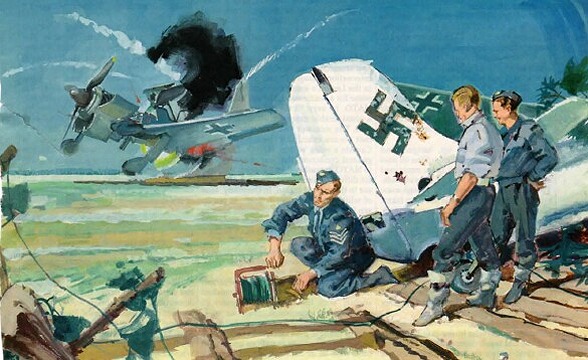
MOPPING UP
by Dave McIntosh
Legion Magazine – May 1987
In the dying days of the war in Europe the Royal Canadian
Air Force cobbled together a planeless unit called 8402 Disarmament Wing.
It comprised 363 officers and men, 57 trucks and cars, five motorcycles,
that reached-by sea and land convoy-its operating base at Oldenburg, Germany,
May 20, 1945. The area of operations was 6,600 square miles in the northwest
corner of Germany occupied by the Canadian and Polish armies. The purpose
was to seek out all the Luftwaffe equipment it could find and destroy what
was not useful for its advanced technology or in the war against Japan.
A report of the wing's activities, dated April 15, 1946,
five days after it closed down-and still marked "secret" -was discovered
recently in the Public Archives of Canada among the memorabilia of a junior
RCAF ground officer. Because the wing's members had few points in the repatriation
scale, they considered themselves, the report says, "a lost legion of low
pointers."
The medical section of the report adds that the "appallingly
high" venereal disease rate fell dramatically the moment word came through
that the unit was going home-nearly a year after VE-Day. Morale had been
so bad that wing officers had attended the trial in Aurich of Maj.-Gen.
Kurt Meyer, condemned to death for the butchery of Canadian prisoners in
Normandy, for something to do. Meyer was later reprieved and became a
beer salesman to Canada's NATO brigade group in Germany.
It will be no surprise to survivors of 6 Bomber Group
or other Canadian combat fliers over Europe that the German air defence
system was found to be highly sophisticated. The wing established that
German flak claims were "most accurate" by comparing them with RAF
records, though reality bore little resemblance to broadcasts by Dr. Goebbels,
the minister of propaganda.
On the Frisian Islands of Borkum, Norderney and Juist,
off the northwest coast of Germany, the wing found most Luftwaffe installations
practically intact and the German air force staffs still on the sites.
The officer in charge, Hauptmann Sobich, fell all over himself, the report
says, explaining the anti-aircraft defences -until arrested for the murder
of American airmen who had bailed out over the islands. The report adds:
"This was a good initial lesson to staff on the character of the Hun-either
at your throat or at your feet."
A complete radar site, code-named Jaguar, was found on
Juist. It was used for early warning, interception and night fighter control.
A complete infra-red aircraft detection installation was found intact on
Borkum. On the mainland coast a huge installation was discovered containing
a completely new type of radar called "see Elefant" and used for long-range
early warning. Ten barges were required to remove the equipment from Norderney
alone to Hamburg for trans-shipment to England.
One of the wing's most useful, but distressing, activities
was locating Allied aircraft reported to have crashed in the area through
interrogation of burgomeisters, clergymen, police and civilians,
and by checking burial records. Details of more than 100 burials were obtained.
The unit discovered the documents of the local Luftwaffe air-sea rescue
squadron with particulars of many Allied fliers rescued from the North
Sea.
The wing's main targets were airfields, factories, air
parks, depots, radar and experimental stations, and communications networks.
Smaller targets included warehouses, barns, taverns, pigsties, and private
homes. A house search at Elmenhorst on Dec. 4, 1945, turned up only Nazi
literature. But on the same date at Wittmundhafen, the wing found several
V2 rocket warheads and shipped them to England. A barge on the Osnabruck-Bramache
canal was found containing four dismantled Heinkel aircraft. A section
of Bremen's air defence system was uncovered: three fighter control stations,
four jamming stations, a Fluke! (observer corps) plotting station, a listening
and direction-finding stations.
The wing searched vainly for weeks in a forest near Hesel
for a reputed underground factory said to have been manned by 5,000 slave
laborers. The wing had its own slave laborers of a sort: several units
of 50 to 300 German prisoners of war, all from the Luftwaffe, who did the
lifting and toting of captured war material. ''Discipline on the whole
was very good,'' says the report of these "labor units." Each unit had
a small police staff and the wing could mete out punishment of up to 10
days on bread and water. More serious cases were handed over to the military
government.
Periodic raids were made on the laborers' quarters by
the RAF to search for firearms and other weapons. Deserters were mainly
men with next-of-kin in the Russian occupation zone. Rations for the laborers
were set at 2,440 calories a day, later cut to 1,914 for workers on light
duties, and there was only one complaint: a scarcity of potatoes.
The wing shipped to England-no mention is made of Canada-826
aircraft engines, including jet engines, 12 radar sets and 258 tons of
other equipment, including searchlights, recording devices, multiple rocket
projectors, infrared telescopes, anti- aircraft sights, and optical equipment.
It turned over three JU-52 planes to the Dutch. It destroyed
56 aircraft, 252 aero engines, and thousands of tons of explosives and
air force equipment. The bomb disposal teams " kept banging away," the
report notes laconically at one point. Runways were torn up,
hangars and other buildings burned. Fifty of the 60 sites found with
armament on them contained explosives, including V1 and V2 warheads. The
explosives were detonated, though some bombs were dumped in the sea or
in lakes. Some guns were reduced to scrap in forges. Incendiary bombs were
used to destroy aero engines and other material. The Royal Navy blew up
the flak sites.
Several airfield buildings had been booby-trapped by the
Germans. No wing personnel were killed or injured, but two German farmers
were killed at Quackenbruck airfield when their wagon ran over a buried
mine. Two Dutchmen were killed at Achmer when they stepped on a mine. Most
of the casualties were among displaced persons, who broke into Luftwaffe
stations and bomb dumps. The report says: "In their ignorance and
child-like failure to appreciate danger, they engaged in the most appallingly
dangerous practices. Even the considerable casualties had very little deterrent
effect." Demolition often had to be stopped by DPs who refused to leave
an area while they searched for any salvageable item. The report says that
the first of 30,000 German refugees began to arrive in the wing area in
October, 1945: "Their countrymen were not at all happy to receive them
and their lot was indeed an unhappy one."
Did the wing nab any war criminals? We are told only that
arrests of "wanted persons" were made. Even the financial activities of
the Luftwaffe in the wing area were thoroughly investigated. RCAF accounts
officers found 3,826,093 Reichmarks of German air force money squirrelled
away in 73 banks and transferred them to the "pool of Allied booty" in
Hanover. All military funds in Germany had been frozen by the Allies on
May 7, 1945. Payments out of Luftwaffe funds after that date resulted in
the arrests and convictions- the number isn't given-of bank officials for
embezzlement. Accounting records were found intact at three airfields and
they revealed that in the war's last days all Luftwaffe personnel, including
civilians, had been paid in advance for the months of May, June and July.
There is no recorded case, at least in the operational
area of 8402 RCAF Disarmament Wing, of any German giving back any part
of his pay for non-performance of duties after May 7, 1945.
148
of 150: Farewell RCAF Women's Division
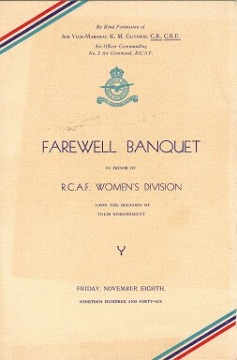 By
Kind Permission of
By
Kind Permission of
AIR VICE-MARSHAL K M. GUTHRIE, C.B., C.B.E.
Air Officer Commanding
No. 2 Air Command, R .C.A.F.
FAREWELL BANQUET
IN HONOR OF R.C.A.F. WOMEN'S DIVISION
UPON THE OCCASION OF THEIR DISBANDMENT
FRIDAY, NOVEMBER EIGHTH,
NINETEEN HUNDRED AND FORTY-SIX
MESSAGES
To the Members of the R.C.A.F. Women's Division from
THE MINISTER OF NATIONAL DEFENCE FOR AIR
In answering the call to help Canada's war effort, the
challenge was at once accepted by the women of Canada. The work performed
by the Royal Canadian Air Force Women's Division was a vital contribution
to final victory. The cheerful and efficient manner in which you undertook
and accomplished every task assigned to you won the admiration, not only
of the men in the Service but also of the country as a whole.
I would like to personally express my appreciation to
all members of the Women's Division for your magnificent work and to wish
each one of you good luck and happiness for the future.
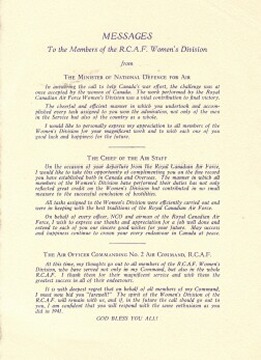 THE
CHIEF OF THE AIR STAFF
THE
CHIEF OF THE AIR STAFF
On the occasion of your departure from the Royal Canadian
Air Force, I would like to take this opportunity of complimenting you on
the fine record you have established both in Canada and Overseas. The manner
in which all members of the Women's Division have performed their duties
bas not only reflected great credit on the Women's Division but contributed
in no small measure to the successful conclusion of hostilities.
All tasks assigned to the Women's Division were efficiently
carried out and were in keeping with the best traditions of the Royal Canadian
Air Force. On behalf of every officer, NCO and airman of the Royal Canadian
Air Force, I wish to express our thanks and appreciation for a job well
done and extend to each of you our sincere good wishes for your future
. May success and happiness continue to crown your every endeavour in Canada
at peace.
THE AIR OFFICER COMMANDING No.2 AIR COMMAND, R.C.A.F.
At this time, my thoughts go out to all members of the
R.C.A.F. Women's Division, who have served not only in my Command, but
also in the whole R.C.A.F. I thank them for their magnificent service and
wish them the greatest success in all of their endeavours.
It is with deepest regret that on behalf of all members
of my Command, I must now bid you "farewell!" Tube spirit of the Women's
Division of the R.C.A.F. will remain with us, and if, in the future the
call should go out to you, I am confident that you will respond with the
same enthusiasm as you did in 1941.
GOD BLESS YOU ALL!
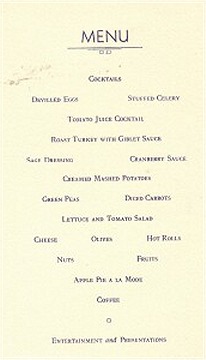 MENU
MENU
COCKTAILS ~ DEVILLED EGGS STUFFED CELERY ~ TOMATO JUICE
COCKTAIL ~ ROAST TURKEY WITH GIBLET SAUCE ~ SAGE DRESSING ~ CRANBERRY ~
SAUCE ~ CREAMED MASHED POTATOES ~ GREEN PEAS DICED CARROTS ~ LETTUCE AND
TOMATO SALAD ~ CHEESE OLIVES HOT ROLLS ~ NUTS FRUITS ~ APPLE PIE A LA MODE
~ COFFEE
ENTERTAINMENT and PRESENTATIONS
MEMBERS OF THE R.C.A.F. WOMEN'S DIVISION No. 2 AIR
COMMAND
(Included are the names of 119 WDs ranked as follows)
Four Flight Lieutenants
One Squadron Officer
One Warrant Officer 2
Two Flight Sergeants
17 Sergeants
38 Corporals
54 Leading Aircraft Women
Two Aircraft Women
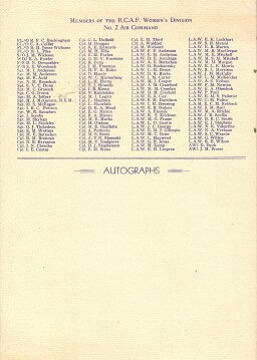 VIEW
THE LIST OF MEMBERS NAMES NAMES HERE
VIEW
THE LIST OF MEMBERS NAMES NAMES HERE
RANK
STRUCTURE IN THE RCAF - VIEW HERE
http://airforceapp.forces.gc.ca/CFAWC/eLibrary/Journal/2012-Vol1/Iss1-Winter/Sections/08-RCAF_Womens_Division_e.pdf
Initially, the Canadian Government was reluctant to recruit
women for the RCAF. Those who wished to make a contribution to the air
force, often moved to Great Britain and joined the RAF’s Women’s Auxiliary
Air Force (WAAF). Others stayed home without the opportunity to join the
air force.
As the war ground on, Canada increasingly faced a manpower
shortage, which applied to the Royal Canadian Air Force as well. Many men
and women of the Royal Air Force found themselves to the burgeoning British
Commonwealth Air Training Plan. Local women, without such an opportunity
began to speak out about the inequity and the government listened. The
CWAAF was born, later morphing into the RCAF Women’s Division. It was no
longer an auxiliary, it was organization equal to that of the male part
of the RCAF with women shouldering the same obligations and priveldges
to the air force as the men experienced. The Woman’s Division was the first
of the three Canadian military branches to admit women for service.
At the start, only nine trades in the RCAF were opened
to women. By the end of the war, Women’s Division members were employed
in 69 RCAF trades.
The MacKenzie King government had been reluctant to authorize
the enlistment of women in the military services. However, by the summer
of 1941 it became apparent that the services were facing a manpower shortage.
Therefore, consideration was given to the possibility of women entering
the service and replacing men in noncombat roles. After all, the British
had been employing service women for the past two years with excellent
results. The RAF’s success in this program may have
. It was no longer an auxiliary organization but a true
part of the air force. Originally there had been only nine trades open
to women, however, encouraged by the success of the first intake, the number
of available trades was soon expanded to sixty-nine. Eventually, a total
of 17,038 women would be enrolled before recruiting ended in the spring
of 1944. The Women’s Division, or WDs as they were popularly called, served
throughout Canada, the United States and England where they became component
parts of the RCAF Overseas and 6 Group Headquarters. By the end of the
war, 28 WDs had been killed or died on active duty, and many had been decorated
for their dedicated service.
With the end of the war the Women Division was quickly
disbanded and by December 1946 that last discharge had been administered.
However, in a short five years, the RCAF responding to Cold War (sic) pressure
would again expand and the Women’s Division was reinstituted building upon
its wartime traditions.
http://www.cbc.ca/archives/entry/women-of-wwii-the-women-who-serve-that-men-may-fly
* The Canadian Women's Auxiliary Air Force (CWACs) was created on July
2, 1941 - the first Canadian military branch to accept women. A year later
it was integrated with the Royal Canadian Air Force and renamed the Royal
Canadian Air Force Women's Division.. The WDs first trained at Toronto's
Havergal College, a private girls' school designated as "No. 6 Manning
Depot." The first 150 recruits joined in October 1941 and completed their
training on Dec. 1, 1941.. At its height in December 1943 the WD had 591
officers and 14,562 members of all ranks. Over 17,000 women - eight per
cent of all RCAF personnel - served in the WD by war's end.. The WD was
disbanded on Dec. 11, 1946 as the Canadian military was drastically reduced..
A key contribution of the WD was operation of the British Commonwealth
Air Training Plan which trained 159,340 aircrew personnel (including 49,507
pilots) from Australia, New Zealand, England and Canada from late 1939
until March 31, 1945.. British Prime Minister Winston Churchill called
the program "Canada's greatest contribution to the Allied victory"; U.S.
president Roosevelt called Canada "the aerodrome of democracy.". In 1951
women were permitted to join the RCAF directly. They were accepted as pilots
in 1979; in 1987 Canada allowed female fighter pilots.. CBC's Comrades
in Arms debuted Oct. 2, 1942. It was the first broadcast of "combined operations"
with Canada's army, navy and air force all contributing to the show. In
addition to dramatizations it promised "Men and women will play their true
roles in this radio feature series reflecting current history."
A number of interesting broadcast articles about Canada’s
women at war in WWII are available on the CBC Digital Archives at:
http://www.cbc.ca/archives/topic/on-every-front-canadian-women-in-the-second-world-war
Trades included
Originally, only nine trades were open to women; however, duties expanded
as the war progressed and 69 trades became available. Among the many jobs
carried out by WD personnel, they became clerks, telephone operators, drivers,
fabric workers, hairdressers, hospital assistants, instrument mechanics,
parachute riggers, photographers, air photo interpreters, intelligence
officers, instructors, weather observers, pharmacists, wirelessoperators,
and Service Police. RCAF regulations at the time precluded women who possessed
flying licences from flight instructing or front-line duty.[4] Most WDs
were located at British Commonwealth Air Training Plan and RAF training
stations across Canada and Newfoundland, many served in Canadian operational
stations, some served in the United States and many were posted overseas
with RCAF Overseas Headquarters and No. 6 (bomber) Group.
https://en.wikipedia.org/wiki/Royal_Canadian_Air_Force_Women%27s_Division
A Summary of the Royal Canadian Air Force Women’s Division
in World War II
When war was declared by Canada against the world’s Axis
powers in September 1939, enlistment in the Canadian armed forces took
a substantial jump by men, young and old wishing to get involved for reasons
of patriotism, adventure and/or financial gain. Many women, with similar
motivations went to their local Recruiting Centre with ambitions of enlisting
as well. Much to their dismay, the army, navy and air force, following
Government of Canada policy, prevented them from becoming soldiers, sailors
and airwomen.
However, the government changed its tune in 1941 as the
enlistment of men slowed because of the huge draw of them into service
in the first two years of the war. The pool had shrunk considerably and
new male recruits were in short supply for combat and non-combative duties.
The Royal Canadian Air Force was the first of the service branches to breach
the enlistment of women barrier when Ottawa, with an order-in-council in
June 1941, changed the eligibility of women to take on non-combative jobs
in the Canadian armed forces. Women began joining the RCAF as their motto
decreed: "We serve that men may fly."
The first rounds of airwomen, joined the RCAF as members
of the Canadian Women’s Auxiliary Air Force (CWAAF) which was modelled
after the British Royal Air Force’s Women’s Auxiliary Air Force (WAAF).
A number of women officers from the WAAF were seconded to Canada to assist
with the implementation of the CWAAF. Princess Alice, Countess of Athione,
was appointed Honorary Commandant of the RCAF Women’s Division.
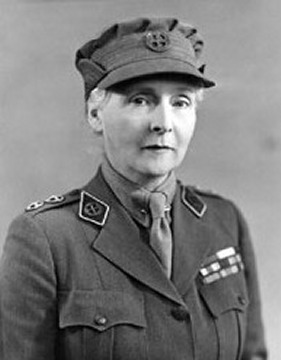
Princess Alice, Countess of Athione
Honorary Commandant of the RCAF Women’s Division.
As the number of women in Royal Canadian Air Force increased,
more airmen were allowed to take their places in combat related jobs. Seeing
the need to put some distance between the CWAAF and Britain’s WAAF, another
order-in-council in 1942 allowed for subtle changes in management of the
women and the group was renamed the Royal Canadian Air Force Women’s Division.
The process of training and deployment of airwomen into
air force jobs was similar to that used for airmen. The women were sent
through the British Commonwealth Air Training Plan to pick up the skills
and knowledge required to do their jobs in the air force. Upon completion
of physical, mental and social testing at the Recruitment Centre, the women
were sent to one of two Manning Depots (No. 6 in Toronto and No. 7 in Rockclffe
(Ottawa)) to complete basic training, i.e. learn how to march, who to salute,
how ranks worked within the air force, etc. From here, most women went
on to various British Commonwealth Air Training Plan ground schools to
learn their trades.
In the early months of the RCAF Women’s Division, women
were allowed to work in nine trades. As they proved their abilities, the
list of allowable trades expanded to 69 by the end of the war. Women
found meaningful work as clerks, telephone operators, drivers, hospital
assistants, instrument mechanics, parachute riggers, photographers, air
photo interpreters, intelligence officers, instructors, weather observers,
pharmacists, wireless operators, service police, pharmacists, laboratory
assistants and dozens of other trades. Many airmen were able to move into
air force units in combat zones throughout the world as ground support
workers and air crew flying fighters, bombers and transport aircraft.
The results of integrating women into the Royal Canadian
Air Force were remarkable. Over 17,400 served in the RCAF Women’s Division
between 1941 and 1946. Over 1,000 became air frame and aero engine mechanics
gaining certification for their abilities as tradespersons. Women were
deployed to every British Commonwealth Air Training Plan and other RCAF
facility in Canada and Newfoundland. Many WDs found work overseas with
1,500 serving in RCAF Headquarters and No. 6 Bomber Group, both located
in Great Britain. Some were deployed to positions as liaisons with
American government and military groups in the United States.
Twenty members of the RCAF Women’s Division received the
British Empire Medal, 12 received the MBE (Most Excellent Member of the
British Empire) and one, Dr. Jean Davey received the OBE (Order of the
British Empire). Twenty-eight women died during World War II while in service
to the RCAF WD.
Women also struck a blow for pay equity while service
in the Women’s Division. When first allowed to serve in the RCAF, a women’s
wage was 2/3 of that paid to airmen. Common thought at that time was that
women could only complete 2/3 of the work of men. By the end of the war,
women were receiving 80% of the wages given men. In 2017, this is a terrible
situation, but it was a positive gain at the time. The increased wages
for women found its way into the private sector, which up to that time,
only paid 40% of that paid to a man.
The following figures help to explain the important contributions
made by women to the Canadian armed forces during World War II. As mentioned
previously, 17,400 women served as WDs, 21,600 as CWACs in the Canadian
Army, 7,100 as WRENs in the Royal Canadian Navy. Four thousand, four hundred
and eight women served as Nursing Sisters in hospitals and other medical
facilities in Canada and overseas of which 481 were attached to the RCAF.
The Royal Canadian Air Force Women’s Division was disbanded
in 1946. With Canada involved in the Korean War in 1951, women were once
again encouraged to join the RCAF. This time they were not set apart from
the men as members of the Women’s Division. They were enlisted as airwomen
on equal footing with that of the men. Both genders followed the same service
motto - "Per Ardua Astra – Through Adversity to the Stars." Women still
serve with distinction in the Royal Canadian Air Force. The final barrier
was breached in 1988 when women were first allowed to fly aircraft in combat.
https://en.wikipedia.org/wiki/Royal_Canadian_Air_Force_Women%27s_Division
149
of 150: The British Commonwealth Air Training Plan
The world was at war! In 1939, Germany led by the fascist
madman Adolph Hitler and his Nazi (National Socialist) Party was invading
and taking European countries one by one, easily overcoming whatever resistance
they could bolster.
Countries fighting Germany’s imperialism had pepared for
war with the same vigor as their foe. Great Britain, led by Prime
Minister Neville Chamberlain, was counting on appeasement of the Nazis
with a negotiated peace. Britain got the peace agreement on September 30,
1938, which Hitler violated less then 12 months later by invading Poland,
another Allied country. Britain declared war on Germany in September 1939.
Not only did Britain and its Commonwealth Allies enter the war, but found
themselves in a battle to quickly and adequately equip their armed forces
to beat Germany.
World War II would become a highly-mobile and mechanized
war which required among other things, air forces with modern equipment
and the best-trained personnel. A scheme was required to provide the training
for the Commonwealth Air Forces. It would have to be an enormous effort
to recruit and train a highly skilled workforce. The countries of Great
Britain, Canada, Australia and New Zealand banded together to create such
a training scheme.
Representatives from these countries, after months of
negotiations, came together in Ottawa, Ontario on December 17, 1939 to
sign the Riverdale Agreement, the document which gave birth to the British
Commonwealth Air Training Plan (BCATP). They agreed that the BCATP should
be built and operated in Canada. It was the logical choice for a number
of reasons. Canada was a safe distance from wartime hostilities. It had
an abundance of wide-open spaces and a favourable climate, both of which
made for productive and unfettered aircrew training. Canada also, was capable
of producing and delivering the goods and services and had a pool of skilled
labour needed build and operate the BCATP.
Originally, the Royal Canadian Air Force, Royal Air Force,
Royal Australian Air Force and Royal New Zealand Air Force planned for
the BCATP to generate sufficient numbers of aircrew for the war effort
with three Initial Training School (ITS), 13 Elementary Flying Training
Schools (EFTS), 16 Service Flying Training Schools (SFTS), 10 Air Observer
Schools (AOS), 10 Bombing & Gunnery Schools (BGS), two Navigation Schools
(ANS) and four Wireless (Radio Operation) Schools. The plan for the Plan
was to train 50.000 aircrew each year – 22,000 British, 13,000 Canadian,
11,000 Australians and 3,300 New Zealanders.
The British Commonwealth Air Training Plan came close
to meeting this objective by providing over 130,000 pilots, observers,
navigators, bomb aimers, wireless operators, flight engineers, air gunners.
There were over 150 schools located in all of Canada’s nine provinces.
Not only were students from the four Commonwealth Countries trained in
the BCATP, but others from the United States, South Africa, Czechoslovakia,
Denmark, Free France and Finland were also trained in the Plan. Canada’s
BCATP was responsible for training one-half of the aircrew which fought
for the Commonwealth Air Forces in World War II. It had become, and continues
to be, the largest air crew training scheme in the history of the world.
To make the BCATP work, the RCAF divided Canada into four
regions with individual Air Training Commands located in each of the regions.
The objective of each Training Command was to oversee BCATP operations
and deploy human and material resources as needed to provide appropriate
training in their region. The schools were set up to train three major
groups of air force personnel – aircrew, ground crew and ground support
workers. Aircrew were those who flew and operated the aircraft – pilots,
navigators, gunners, etc. Ground crew were those who prepared and repaired
aircraft with all of the associated flying and combat accessories for missions.
Ground crew included mechanics, riggers, radio technicians, armorers, etc.
Without the ground crew, the aircrew didn’t fly. Ground support workers
were those who kept all of the non-aircraft things and processes going.
Ground support included a multitude of other types of jobs. There were
cooks, drivers, administrators, telephone operators, photographers, etc.
etc. etc. All of Canada’s provinces provided space and resources
to build and maintain schools for the three types of workers. When the
BCATP reached its end in 1945, it had trained an equal amount of airmen
and airwomen for ground positions as had been trained for air crew
positions.
The Process of Training – Schools and Trades of the
BCATP
Aircrew received training for seven trades – pilot, air
observer, navigator, flight engineer, aid gunner, bomb aimer and wireless
operator. Ground crew and ground support workers represented dozens of
other trades. The following is a summary of the schools of the BCATP.
1 - Recruiting and Manning
Recruiting Depots – civilians applied to become
members of the Royal Canadian Air Force at Recruiting Centres located in
16 cities across Canada. Enlistees would be subjected to academic, medical,
psychological and social testing to determine their suitability for service
in the RCAF. If they were accepted, they would be sent on to one of seven
Manning Depots.
Manning Depot – the first stop for all newly enlisted
airmen and airwomen would be one of seven Manning Depots located in Toronto,
Brandon (Swift Current) , Edmonton, Quebec City, Lachine, Toronto (Women’s
Division) and Rockcliffe (Women’s Division). Here they received an orientation
to the RCAF and learned the basics of life in the air force. They were
taught how to march, dress appropriately, recognize and communicate senior
ranks properly, etc. At the end of four or five weeks training, a selection
committee would determine what job in the RCAF would be appropriate for
the airman or airwoman. If acceptable, they would be sent on for training
as aircrew, ground crew or other ground based jobs. Only Royal Canadian
Air Forc personnel attended training at the Manning Depots.
2 - The Aircrew Schools
Initial Training School (ITS) – those airmen found
suitable for duties as aircrew (pilot, air observer or navigator)
would spend four to five weeks in ITS for introductory training in a number
of subjects important to flying and performance of duties on an aircraft.
Students would take courses in navigation, theory of flight, meteorology,
algebra, trigonometry, air force administration etc. ITS was all ground
school training – there was no flying. Students also undertook further
health, education and mental health testing. The ITS gave staff a further
chance to determine qualifications of a student for specific aircrew positions.
Students did not always get the aircrew position they desired and some
washed out of aircrew training completely, to be sent for ground school
or ground support positions. There were seven Initial Training Schools
in the BCATP. Only RCAF airmen attended training at the ITS.
Elementary Flying Training School (EFTS) – students
successfully chosen to become pilots at the ITS, would attend the
EFTS for approximately eight weeks training and received a minimum of 50
hours flying training. The remainder of their time was spent with substantial
ground school training. If the student successfully soloed in an aircraft
and demonstrated an appropriate level of flying knowledge, they were sent
for advanced flying training at a Service Flying Training School. The EFTS
used de Havilland Tiger Moth, Fleet Finch and Westland Cornell aircraft
for instruction. There were 26 RCAF and six Royal Air Force (RAF) Elementary
schools in the BCATP. They were privately run with civilian instructors
and RCAF or RAF management. Generally, pilots for the Royal Australian
and Royal New Zealand Air Forces, qualified as elementary pilots before
coming to Canada. They would start their BCATP experience at the Service
Flying Training School.
Service Flying Training School – students would
attend 10 to 16 weeks of training with 75 to 100 hours flying time and
more ground school training. The purpose of the SFTS was to build skills
and knowledge in pilots to enable them to transition from flying simple
aircraft like the Tiger Moth to something closer to actual combat aircraft
like Spitfires and Lancasters. Pilots selected for fighter aircraft
attended schools where they flew single-engine trainers like the North
American Harvard. Pilots selected to fly bombers or transport aircraft
attended schools where they learned to fly multi-engine aircraft like the
Cessna Crane or Airspeed Oxford aircraft. There were 19 RCAF and
10 RAF Service Flying Training Schools in the BCATP.
Air Observer School – students selected to become
air observers or navigators would attend 12 weeks of training to learn
navigation, aerial photography and reconnaissance techniques. Their AOS
training was a mix of ground school and 60 to 70 hours of training in an
Avro Anson aircraft. This training would be followed up with 10 weeks of
training at a Bombing & Gunnery School and four weeks at an Air Navigation
School.
In 1942, training for Air Observers was eliminated when
it was decided by Bomber Command that the duties of the overworked Observers
was to be split between a number new aircrew positions. Air Observer responsibilities
were assumed by three aircrew trades:
-
- Navigator B (Bomb Aimer) –eight weeks at Bombing &
Gunnery School, 12 weeks at Air Observer School to qualify for navigation
and bomb-aiming duties. Graduates were deployed to heavy, multi-engine
aircraft such as the Lancaster and Halifax bombers.
-
- Navigator W (Wireless/Radio Operator) – 28 weeks at Wireless
School and 22 weeks at Air Observer School. Graduates were deployed to
two engine fighter/bombers such as the Mosquito aircraft.
-
- Air Bombers – 8-12 weeks at Bombing & Gunnery School,
six weeks at AOS learning bombing, map reading and observation to assist
the Navigator with his job. Air Gunners were deployed to heavy multi-engine
aircraft.
There were 10 Air Observer Schools in the BCATP. Although
the new Air Observers were no longer being trained, the Air Observer Schools
retained their title and adapted training to meet the needs of the new
aircrew positions. The Air Observer schools utilized the Avro Anson
for training.
Bombing & Gunnery Schools (BGS) – Air Observers,
Navigators, Bomb Aimers and Wireless Air Gunners took Bombing &
Gunnery Training as a component of their air trade training. Air Gunners
qualified for this position after six weeks of training at the BGS.
Bombing & Gunnery Schools were located in 11 locations in Canada.
The schools utilized the Avro Anson, Bristol Bolingbroke, Fairey Battle
and Westland Lysander.
Wireless School – Wireless Air Gunners spent 24
to 28 weeks at Wireless Training School learning the use of wireless (radio)
and land based communications. A certain level of proficiency with the
Morse Code was essential to pass. They were taught to pass on signals and
messages via lights, flags and radio. Training would be completed with
the WAG completing four weeks of training at a Bombing & Gunnery School.
There were four Wireless schools in Canada which utilized extensive ground
school training with training in flight with the Avro Anson.
Naval Air Gunner School (NAV) – there was one Naval
Air Gunner school in Canada located at Yarmouth, Nova Scotia. The Fairey
Swordfish aircraft was utilized for training. Although it fell under the
prevue of the BCATP, only Royal Canadian Navy air crew were trained at
the naval school.
Flight Engineer – received training as an aero
engine technician responsible for monitoring and adjusting electrical and
fuel systems and engines on multi-engine aircraft. Engineers were given
enough pilot training to take over flying if the aircraft pilot became
incapacitated. Most of the RCAF Engineers were trained in Britain but 1,900
were trained at Flight Engineer School in Aylmer, Ontario.
General Reconnaissance School (GRS) – pilots, air
observers and navigators were taught the techniques required to fly ocean
patrol missions. The GRS was an advanced school equivalent to the Operational
Training Unit (OTU) which were 'finishing' schools for aircrew prior to
assignment to an operational squadron. Students were schooled in dead-reckoning
navigation, astro-navigation, compasses and other instrument operation,
meteorology, signals, codes, ship recognition, aerial photography and reconnaissance.
There were two GRS schools located in Canada. Air crew trained on actual
combat aircraft at the GRS.
Operational Training Unit – like the GRS schools,
the Operational Training Unit was where air crew received finishing training
on operational aircraft such as the Hawker Hurricane. Fairey Swordfish
and Consolidated Liberator. There were seven OTUs in Canada including three
that were open for Royal Air Force aircrews.
3 - Flying Related Training (non-combat)
Central Flying School (CFS) was located at Trenton,
Ontario. The objective of the CFS was to maintain consistent, high-standards
of training among the flying schools. Flying instructors received advanced
training at the CFS. The three Flying Instructor Schools came under the
supervision of the CFS.
Central Navigation School (CNS) was located at
Rivers, Manitoba. It was an advanced navigational school with the purpose
of maintaining top standards in navigational training. Most of the graduates
went on to be instructors at various other BCATP schools. The Avro Anson
was utilized for training at the CNS.
Instrument Navigation School (INS) was located
at Deseronto, Ontario.
Flying Instructor Schools were located at Trenton,
Ontario, Vulcan, Alberta and Arnprior, Ontario. Generally speaking, flying
instructors were selected from the best graduates from the Service Flying
Training Schools. At Flying Instructor School, students were taught
the techniques of teaching others to fly aircraft and then were sent on
to the SFTS schools to teach other pilots advanced flying techniques.
4 - The Ground Crew and Ground Support Schools
Dozens of air force jobs directly supporting air operations
or operations of BCATP facilities required training at a number of ground
schools located across Canada. Some of the trades taught at ground school
were administration, cooking, aero-engine mechanic, air-frame mechanic,
police services, photography and dozens of other trades.
Information about the ground schools is limited. The following
is a list of some, but not all, of the ground schools in the BCATP:
Air Armament School, Radio Direction Finding School,
Radio Direction Finding (Radar) School, Composite Training, School of Aeronautical
Engineering, School of Aviation Medicine, School of Cookery, Technical
Training School, Equipment and Accounting School, Code and Cypher School.
BCATP Facts and Numbers
Summary of BCATP Students by Trade and Country

-
Total cost of the British Commonwealth Air Training Plan
as of March 31, 1945 was $2.2 billion.
-
Canada was responsible for $1.6 billion of the total cost.
-
Canada assumed a large portion of Great Britain’s debt -
$425 million.
-
On the 3rd anniversary of the plan, United States President
Franklin D. Roosevelt referred to the BCATP as the Aerodrome of Democracy.
-
At the peak of training in late 1943 – 231 training sites
(schools, relief landing fields, other facilities) were operating with
10,000 aircraft and 100,000 military personnel.
-
Eight hundred and sixty-five airmen and airwomen were killed
while in service to the British Commonwealth Air Training Plan – RCAF 469,
RAF 291, RAAF 65 and RNZAF 31
-
Eight thousand buildings were constructed for the Plan. Seven
hundred were hangars.
-
Fuel storage capabilities – 26,000,000 gallons
-
Three hundred miles of water lines and 300 miles of sewer
lines were installed at BCATP facilities requiring the movement of 2,000,000
cubic yards of spoil. One hundred sewage treatment and disposal plants
were built. One hundred and twenty water pumping stations were built.
-
Two thousand miles of power lines and 535 miles of underground
electrical cable were installed at BCATP facilities.
Cause and Effect
As a result of the British Commonwealth Air Training
Plan:
Hundreds of communities in Canada enjoyed significant
financial and social gains where a BCATP facility was built:
-
Merchants provided all kinds of items to BCATP facilities
under construction including gravel and lumber.
-
Laborers and tradesmen received payment for labor to build
BCATP facilities.
-
Employees, students and instructors at the schools brought
with them a demand for housing, clothing, groceries, recreation to the
local city or town.
-
Many locations had ongoing needs for local goods and services
such as electricity, water, natural gas, coal and food to BCATP facilities.
-
Civilians drew wages as employees of the BCATP
Social benefits came to citizens living near the schools
through interaction with those living at the schools. Both shared parties,
dances, open houses, graduations, sporting events bars, pubs and cafes.
While in Canada, 3,750 Royal Air Force, Royal Australian and Royal New
Zealand Air Force personnel met and married Canadian Women.
Sources:
https://en.wikipedia.org
https://www.friends-amis.org
http://www.veterans.gc.ca

OUR BCATP PHOTO GALLERY I
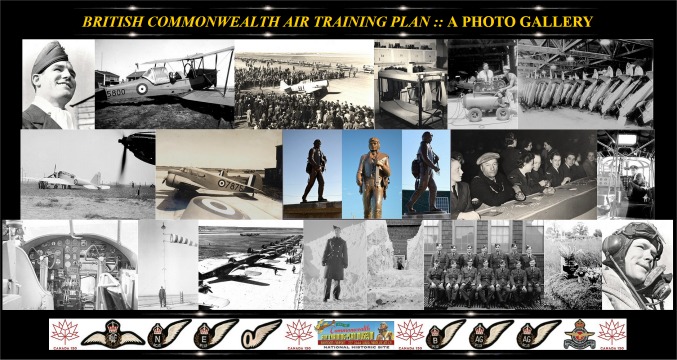
Click
to view the full-size preview collage
. . . then. . .
OPEN OUR PHOTO SCRAPBOOK PAGE
Featuring
20 Large BCATP Photos
www.hillmanweb.com/150/bcatp

150 of 150: Commonwealth Air Training
Plan Museum
Commonwealth AIR TRAINING PLAN MUSEUM INC.
A National Historic Site of Canada
Manitoba Signature Museum
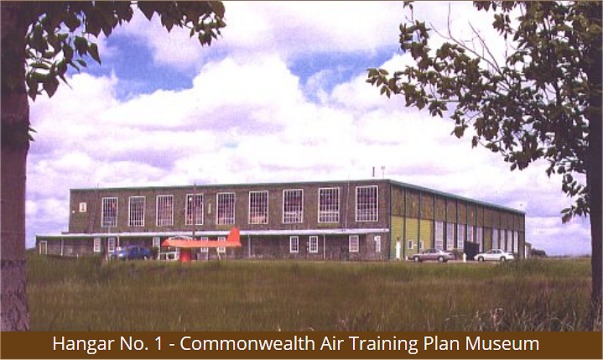
Commonwealth Way, McGill Field, Brandon, Manitoba
The Commonwealth Air Training Plan Museum (CATPM)
is dedicated to commemorating the British Commonwealth Air Training
Plan (BCATP) and those who served in it as students, staff and civilian
workers. The BCATP was an enormous aircrew training scheme which supplied
over 130,000 pilots, navigators, air observers, air bombers, air gunners
and flight engineers to the Commonwealth Air Forces in World War II.
Background
When Great Britain and the Commonwealth countries declared
war against Germany in 1939, the BCATP was created to provide the air forces
of Great Britain, Canada, Australia and New Zealand with large numbers
of highly-qualified aircrew to operate the sophisticated combat aircraft
of that time. An agreement was struck by the four countries in December
1939 to create the British Commonwealth Air Training Plan. The agreement
stipulated that the BCATP was to be built and operated in Canada as it
was removed from the war hostilities of Europe. It provided the advantages
of wide open spaces and generally good weather, essential for providing
ample opportunities for students to fly. Canada also had the resources
and 'manpower' to build and operate the Plan. The Royal Canadian Air Force
(RCAF) was charged with operating the plan.
Between 1939 and 1945 over 200 flying schools and other
facilities were set up in all nine provinces of Canada. Eight thousand
buildings, including 700 aircraft hangars, were built. Ten thousand aircraft
were acquired for aircrew training. When the plan wrapped up 1945, over
130,000 aircrew had been trained for Commonwealth Air Forces to help win
the war against Germany, Japan and Italy. An equal number of airmen and
air women were trained for ground crew and ground support positions.
The Commonwealth Air Training Plan Museum (CATPM) was
created in 1980 when a small group of volunteers, determined to preserve
the memory of the BCATP, sought and received permission from the City of
Brandon to open the museum in Hangar No. 1 at the Brandon Municipal Airport.
The group purchased five aircraft which had been used in the Plan. With
renovations complete, which included a heated area for display of small
artifacts, the museum opened its doors to the public in 1981.
From this small band a force of hundreds of subsequent
volunteers and paid staff have fostered continued improvements to the museum.
Locating the CATP Museum in Hangar No.1 was an inspired
idea. That building was one of five hangars built for No. 12 Service Flying
Training School (SFTS) at the Brandon Airport in 1940. Since opening, volunteers
have expanded the museum to include four additional buildings which could
have been present at any BCATP school during the war. Even though the museum
is located where No. 12 SFTS used to be, the museum has kept the site and
displays `generic’ so that the message provided applies to any and all
schools in the BCATP.
A second important objective of the Commonwealth Air Training
Plan Museum is to collect and preserve artifacts and archival materials
from the BCATP and World War II. The collection numbers more than 30,000
items.
The CATPM Assets
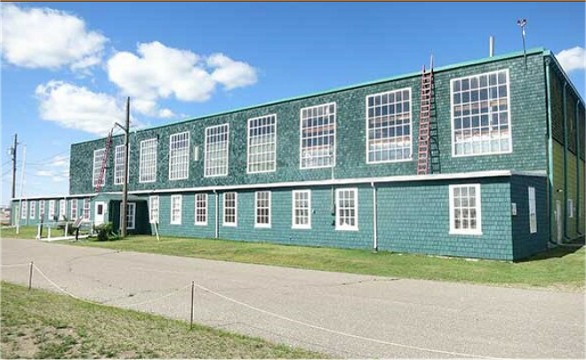
1 – The Buildings
Hangar No. 1 is a double-hangar which was used for the
maintenance and storage of the Cessna Crane aircraft used to teach advanced
flying techniques to pilots at the No. 12 SFTS. While trying to preserve
the original look of the interior and exterior, a heated display space,
office space, a boardroom, chapel and workshop have been added to the
building. Dozens of improvements have been completed through the hard work
of volunteers and generous donations from our patrons. Within the hangar,
visitors will find:
a) Heated Display Space – a 4000 square foot space
to display small artifacts and archival items to visitors. Our displays
tend to each show specific sub-themes from the BCATP which together give
the complete story of the BCATP. Items on display include photographs,
uniforms, dioramas, medals, weapons, electronic items, aircraft equipment,
ground crew equipment, training aids and personal items important to those
who were at the BCATP schools.
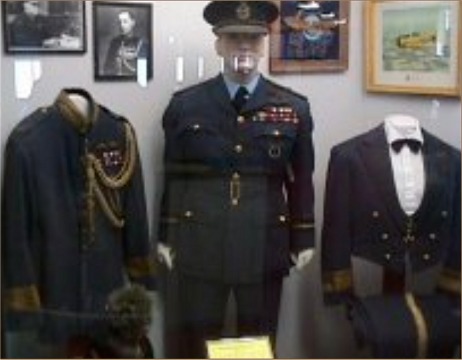
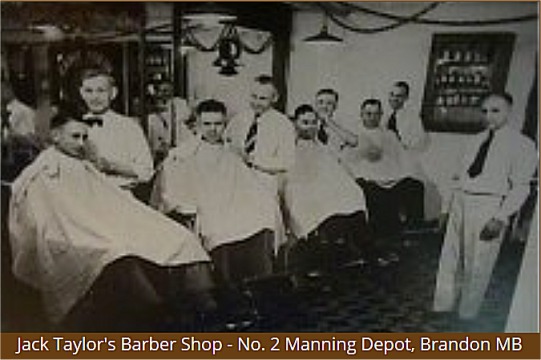
Special displays include the Barber's Book - a
series of four books created by Jack Taylor, owner of the barber shop which
was located in No. 2 Manning Depot, also in Brandon. Twenty thousand airmen
from 32 countries signed and noted their home towns in these books when
they stopped in for a trim while residing at the Manning Depot. Visitors
can view the names in copies of the books on display. Staff will help visitors
searching for a name by accessing a computer data base with the information.
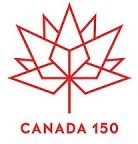


 By
Kind Permission of
By
Kind Permission of
 THE
CHIEF OF THE AIR STAFF
THE
CHIEF OF THE AIR STAFF
 MENU
MENU








